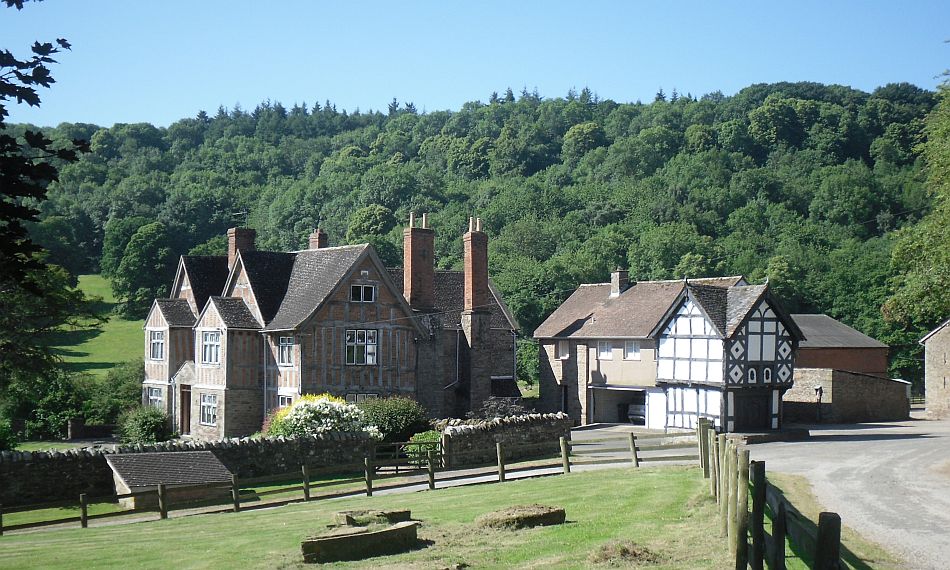



Walk Two - Canon Pyon and King’s Pyon
The image at the top of the page shows the timeless Buttas, half a mile west of Canon Pyon Church.
An early dissertation by Watkins, the Woolhopian
Alfred Watkins says it was probably down to mangel wurzels. It’s a wonder the archaeologist, magistrate and politician had any time at all to go around discovering ley lines; when he wasn’t inventing light meters for cameras, taking very enduring pictures, lecturing on beekeeping, travelling for the family brewery or preserving old buildings, the fourteen-pocketed Herefordian would sometimes turn his attention to compiling lists. Specifically, on 10th April 1890, he addressed the Woolhope Naturalists’ Field Club on the topic of Herefordshire Pigeon Houses.
Leaning on his Photographic Lantern Illustrations, Watkins observed that there were still a large number of interesting dovecotes left in the county. Each decade, however “the number reduces”, he said, “and out of a list of 34 demolished pigeon houses which I have compiled, not one of them has been described or illustrated. Of the seventy-four existing examples which I have surveyed in 1888 and 1889, only the one at Garway has previously been described. Most curious, I think, is the richly carved and ornamented square timber example at the Buttas, or Butt House, King’s Pyon, built by George and Elizabeth Carver in 1632. Like this one, pigeon houses were usually close to the house, and sometimes in the courtyard so that the master of the family could keep in awe anyone who goes in or out”.
Thirty-six years later, Watkins was also at the head of affairs when the Woolhope Club’s Second Field Meeting of 1926 took them across the fields to the Buttas, “to inspect the Norman motte, pigeon house, and early timber mansion of the Carver family. On the south side of the house, towards the stream, are terraces which are irrigated by a channel of water between them and the house. Possibly these terraces were used for vines, the situation being well suited for the purpose.” Judging by the picture taken by Watkins, not a lot has changed at the Buttas.
For the noted chronicler H.T.Timmins, the pigeon house “is a quaint little building, the handsomest of its kind in the county; it stands near a large old farmhouse, in a curiously out-of-the-way situation, upon an eminence whence, on a clear day, a fine prospect is obtained, embracing a rich country bounded by the Malvern Hills. It is said that the wooded hill, close by, called Robin Hood’s Butts, was frequented by the eponymous archer to shoot his arrows across to Canon Pyon Hill; but, as the latter is a full mile away, the story must assuredly be accepted cum grano salis.”
“Bucolic” might be the best word to describe this walk between the Pyons. Worryingly, the name “Pyon” means “island of gnats”. So, suitably sprayed against the Blandford Fly, the author too set off from Canon Pyon Church, 92 years after Watkins, with just a stream and some Friesians for company.
Leaving the Buttas environs, our walk follows old straight tracks to another of Alfred’s dovecotes at the White House, now Brook House, in King’s Pyon. “It was in the 17th and 18th centuries that the bulk of pigeon houses seem to have been built”, he says, “for none appear to have been built since about 1810. It was mangel wurzels that killed them,” he goes on, “there is no doubt that since the general introduction of winter feeding of cattle, and the consequent abundant supply of fresh meat during that season, the demand for pigeons as food has been greatly limited. At a time when salted meat was the staple for winter, it is no wonder that the roomy pigeon house with accommodation for at least 500 pairs of doves was considered an indispensable adjunct to the larder at a country house. But by 1890, pigeons were kept in only about a third of these buildings.”
According to modern chronicler Robert Macfarlane, “Watkins re-enchanted the English landscape, prompting new ways of looking and new reasons to walk. “In addition to his ley lines, his writing for the Woolhope Club can be added to this considerable legacy. Wye Valley Brewery has named a beer after him called Watkins' Triumph. But with his penchant for wurzels, it’s more likely that Watkins was a cider drinker like Adge Cutler and his band of that name.
website designed and maintained
by Hereford Web Design